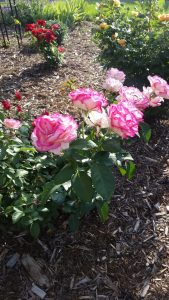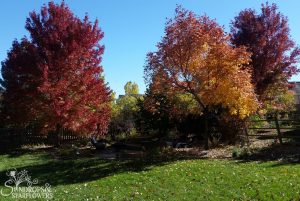Crisp, cool evenings. Downright cold mornings. Chilling winds and swirling leaves. Fall has definitely arrived here in Northern Colorado! The temperatures will continue to dip lower as we head into winter. Preparing the plants and lawn for winter is rarely anyone’s favorite task, but care at this point in the year can make a big difference in next year’s plant health.
Here’s a to-do list to help you prepare for the changing season.

Important Preparations:
- Empty (or partially empty) and protect your pottery for the winter. Terra cotta planters will disintegrate if left in a snow bank. Glazed pottery needs room for any water to expand; these should be at least partially emptied of soil.
- Trim down roses, just to prevent winter breakage. For more information on rose care, see this blog post.
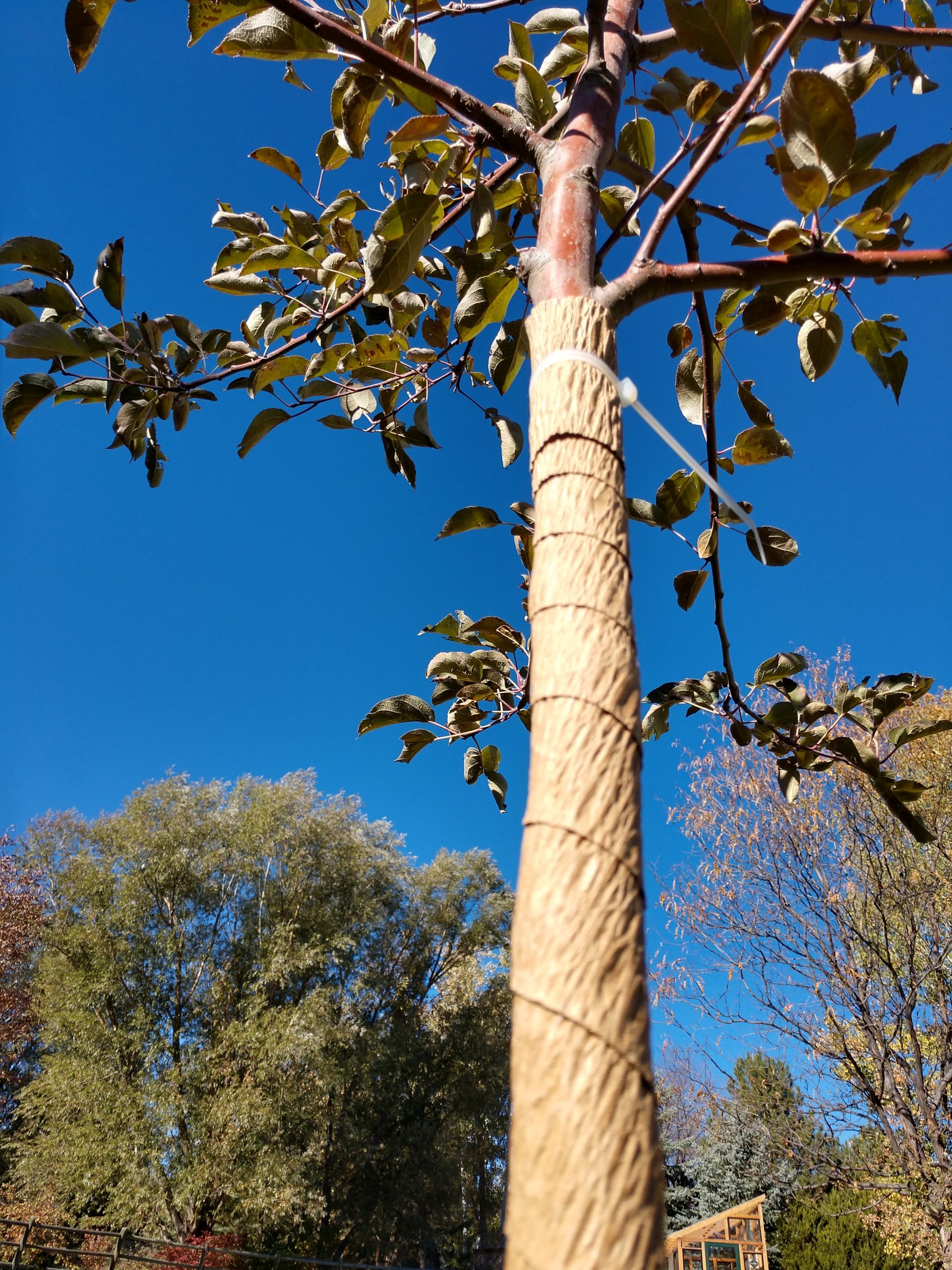 Use tree wrap on young trees to prevent sunscald. Young trees have thin bark which can crack in extreme temperature fluctuations, creating an unsightly wound that inhibits the tree’s growth and takes years to heal. For more information about sunscald, see this information sheet from CSU extension. Zip ties work well to secure the wrap; duct tape does not.
Use tree wrap on young trees to prevent sunscald. Young trees have thin bark which can crack in extreme temperature fluctuations, creating an unsightly wound that inhibits the tree’s growth and takes years to heal. For more information about sunscald, see this information sheet from CSU extension. Zip ties work well to secure the wrap; duct tape does not.- Cover your vegetable garden with leaves, mulch or straw. If you don’t have time to clean up all the debris, just be sure to cover the soil for the winter. Bare soil can become compacted which is nightmarish in the spring.
- Continue to mow the lawn until the grass stops growing. Blue grass is a cool-season grass and it continues to grow in the fall. If you typically mow to a 4″ height (as you should), you can lower the deck to 2.5″ or 3″. Mowing the grass a bit shorter helps the grass from becoming matted under snow and developing snow mold.

If you still have time, do this:
- You don’t have to rake up all the fallen leaves. Yes, we do want to remove huge piles of leaves that could suffocate the plants and soil beneath them but it’s not necessary to remove every single leaf. Running the lawn mower over the leaves to break them up is a great idea, and much easier than raking them up, too. Exception: if your trees or shrubs had disease or insect issues, remove all of that debris this fall.
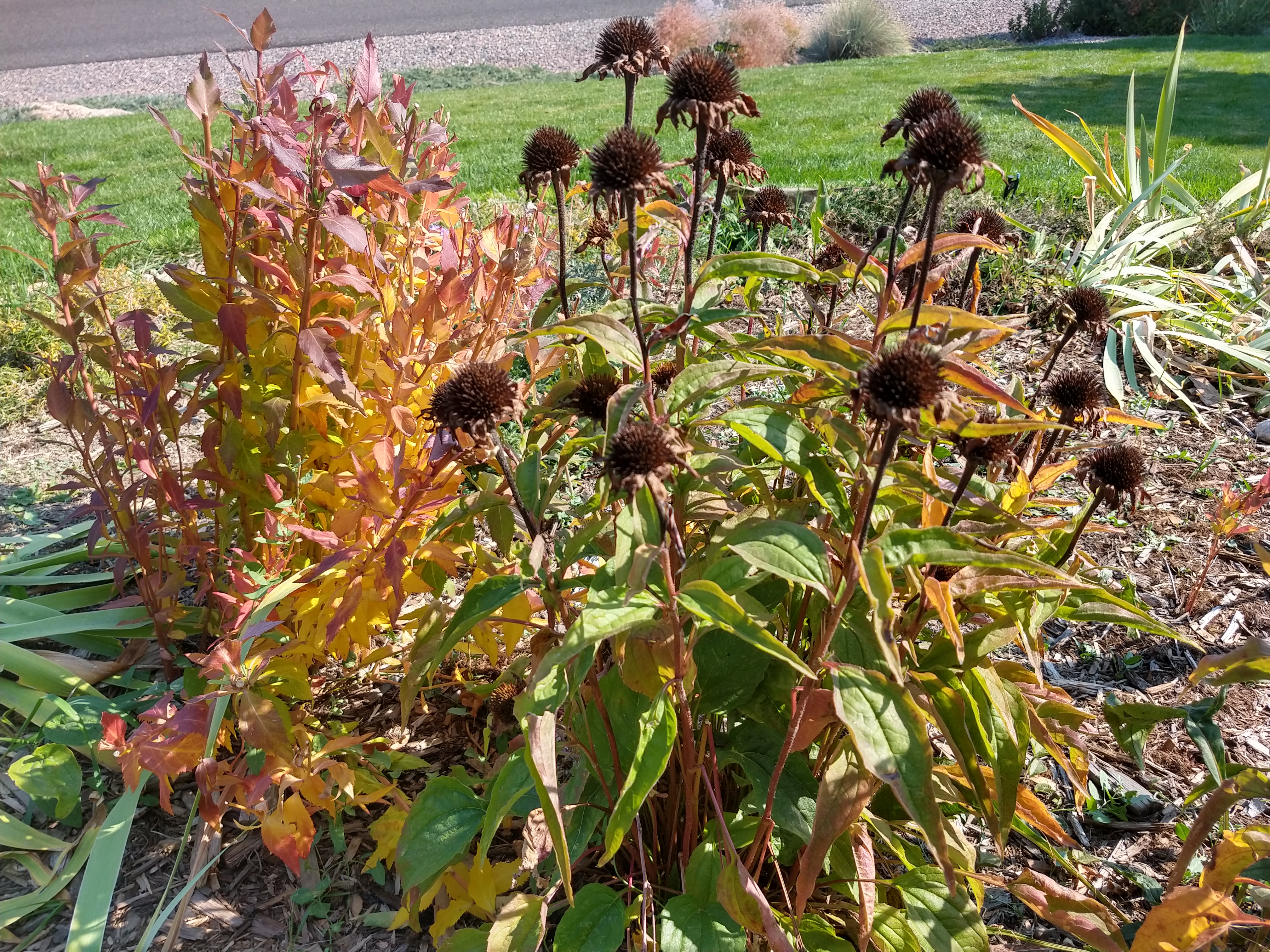 Clear up the perennial and annual flower beds, but don’t feel like you have to do it all. Sure, it doesn’t look great to have gray, decaying plant material in the yard, but that debris also works as an extra layer of winter mulch for the plants and soil. Additionally, the remnants of your flowers can become wildlife habitat for birds and insects. Exception: again, if your plants had disease or insect issues, remove all that debris this fall.
Clear up the perennial and annual flower beds, but don’t feel like you have to do it all. Sure, it doesn’t look great to have gray, decaying plant material in the yard, but that debris also works as an extra layer of winter mulch for the plants and soil. Additionally, the remnants of your flowers can become wildlife habitat for birds and insects. Exception: again, if your plants had disease or insect issues, remove all that debris this fall.

Yard work through the winter:
- WATER! If we haven’t had any natural precipitation for 2-3 weeks, your woody plants will need a drink. My strategy is to put the hose on a trickle and water each tree for 15 minutes, and each shrub for 5 to 10 depending on the size. I use the timer on my phone to help me remember to move the hose. It is especially important to water any trees, shrubs or perennials that you planted this past fall.
- Prune. Most deciduous trees and shrubs are best pruned between December and February. When they’re defoliated for the winter, it’s much easier to see broken, crossed or weak branches. It’s also healthier for the plant since disease spores and insects are dormant and not likely to infect the pruning wound. However, some flowering shrubs should not be pruned until after they flower. Check this blog post and this CSU Extension Fact Sheet for more information about pruning.
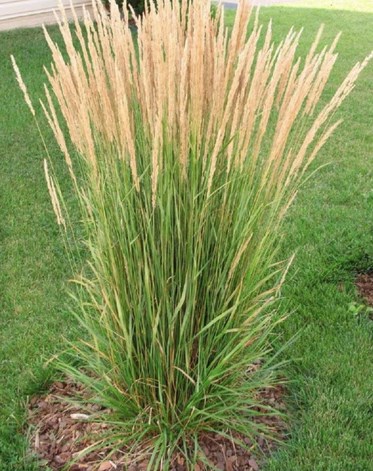 Cut back ornamental grasses in early spring (March-ish). Upright grasses such as Karl Foerster Grass (pictured), Blue Oat Grass and Pampas grass have seed heads which both feed birds and look pretty through the winter. You can enjoy them all winter but you do want to cut them back before the new growth starts in early spring. Check this blog post for some helpful hints on cutting back grasses.
Cut back ornamental grasses in early spring (March-ish). Upright grasses such as Karl Foerster Grass (pictured), Blue Oat Grass and Pampas grass have seed heads which both feed birds and look pretty through the winter. You can enjoy them all winter but you do want to cut them back before the new growth starts in early spring. Check this blog post for some helpful hints on cutting back grasses.


